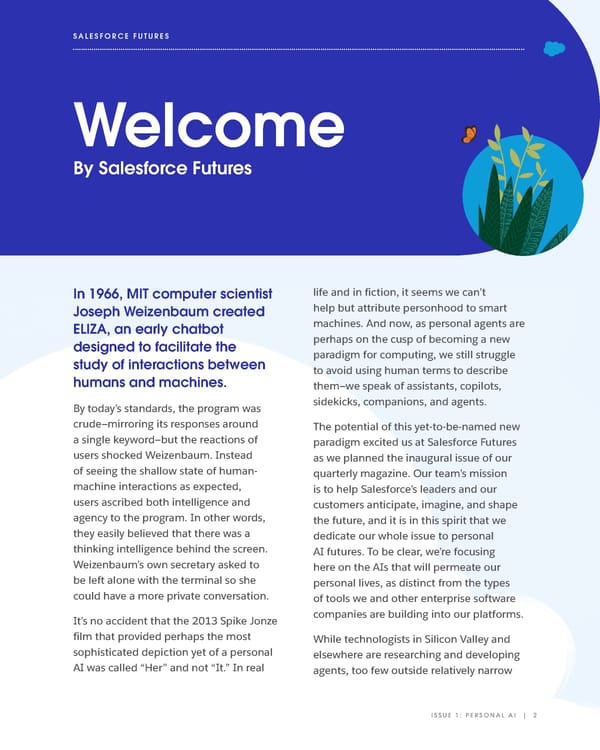SALESFORCE FUTURES Welcome By Salesforce Futures In 1966, MIT computer scientist life and in fiction, it seems we can’t Joseph Weizenbaum created help but attribute personhood to smart ELIZA, an early chatbot machines. And now, as personal agents are designed to facilitate the perhaps on the cusp of becoming a new study of interactions between paradigm for computing, we still struggle humans and machines. to avoid using human terms to describe them—we speak of assistants, copilots, By today’s standards, the program was sidekicks, companions, and agents. crude—mirroring its responses around The potential of this yet-to-be-named new a single keyword—but the reactions of paradigm excited us at Salesforce Futures users shocked Weizenbaum. Instead as we planned the inaugural issue of our of seeing the shallow state of human- quarterly magazine. Our team’s mission machine interactions as expected, is to help Salesforce’s leaders and our users ascribed both intelligence and customers anticipate, imagine, and shape agency to the program. In other words, the future, and it is in this spirit that we they easily believed that there was a dedicate our whole issue to personal thinking intelligence behind the screen. AI futures. To be clear, we’re focusing Weizenbaum’s own secretary asked to here on the AIs that will permeate our be left alone with the terminal so she personal lives, as distinct from the types could have a more private conversation. of tools we and other enterprise software It’s no accident that the 2013 Spike Jonze companies are building into our platforms. film that provided perhaps the most While technologists in Silicon Valley and sophisticated depiction yet of a personal elsewhere are researching and developing AI was called “Her” and not “It.” In real agents, too few outside relatively narrow ISSUE 1: PERSONAL AI | 2
 Salesforce Futures Magazine Page 1 Page 3
Salesforce Futures Magazine Page 1 Page 3